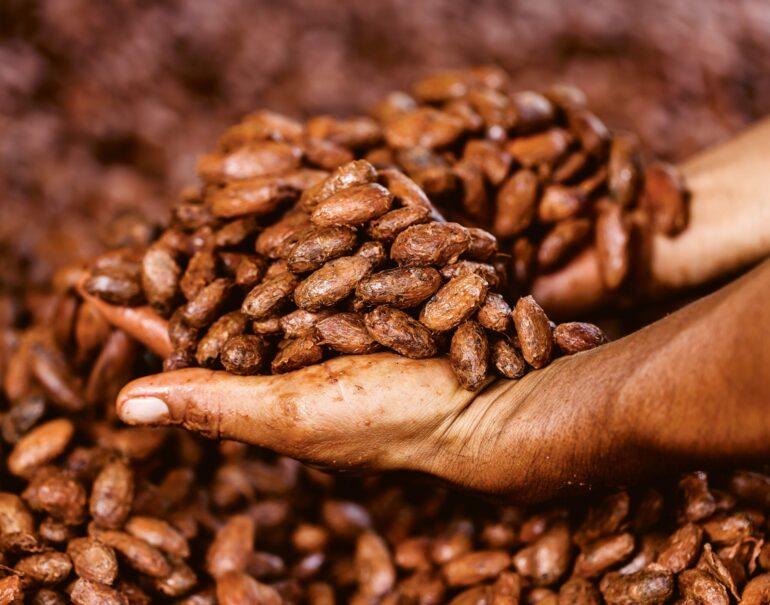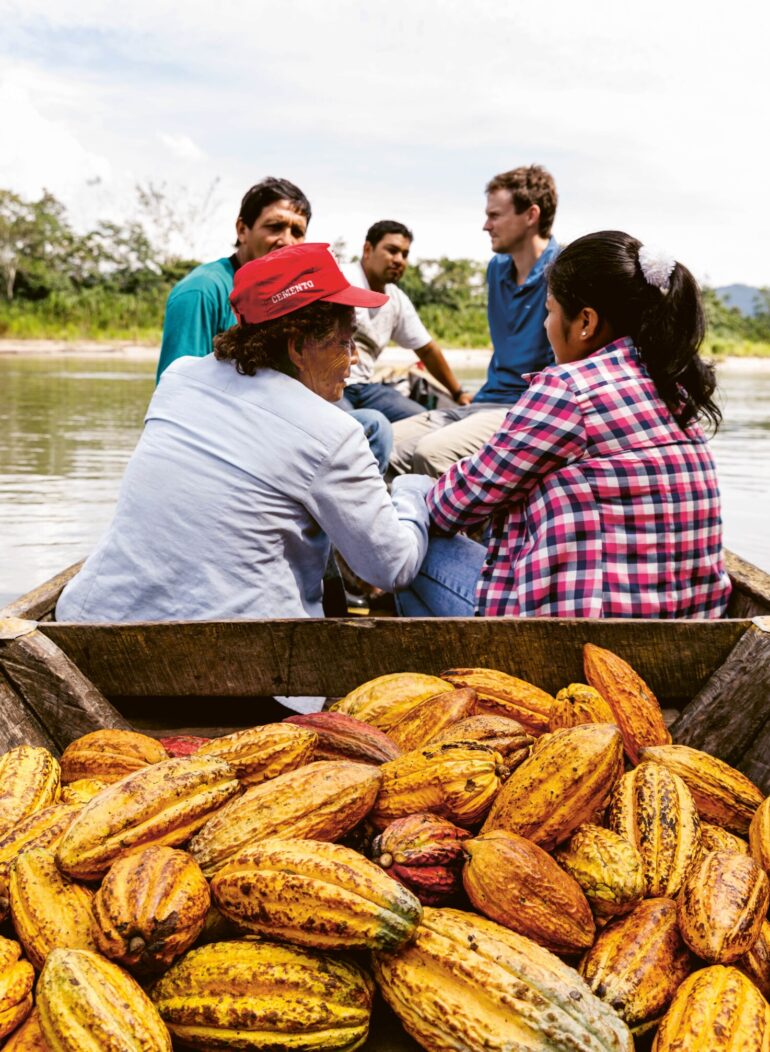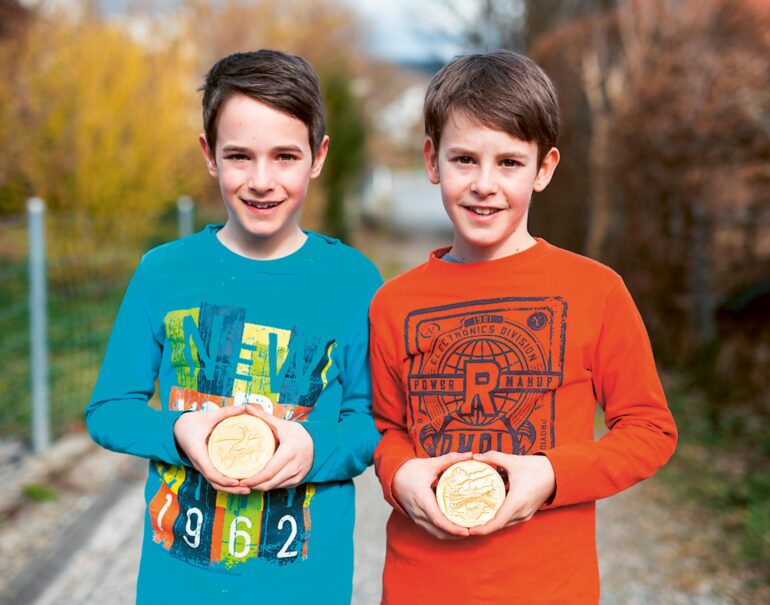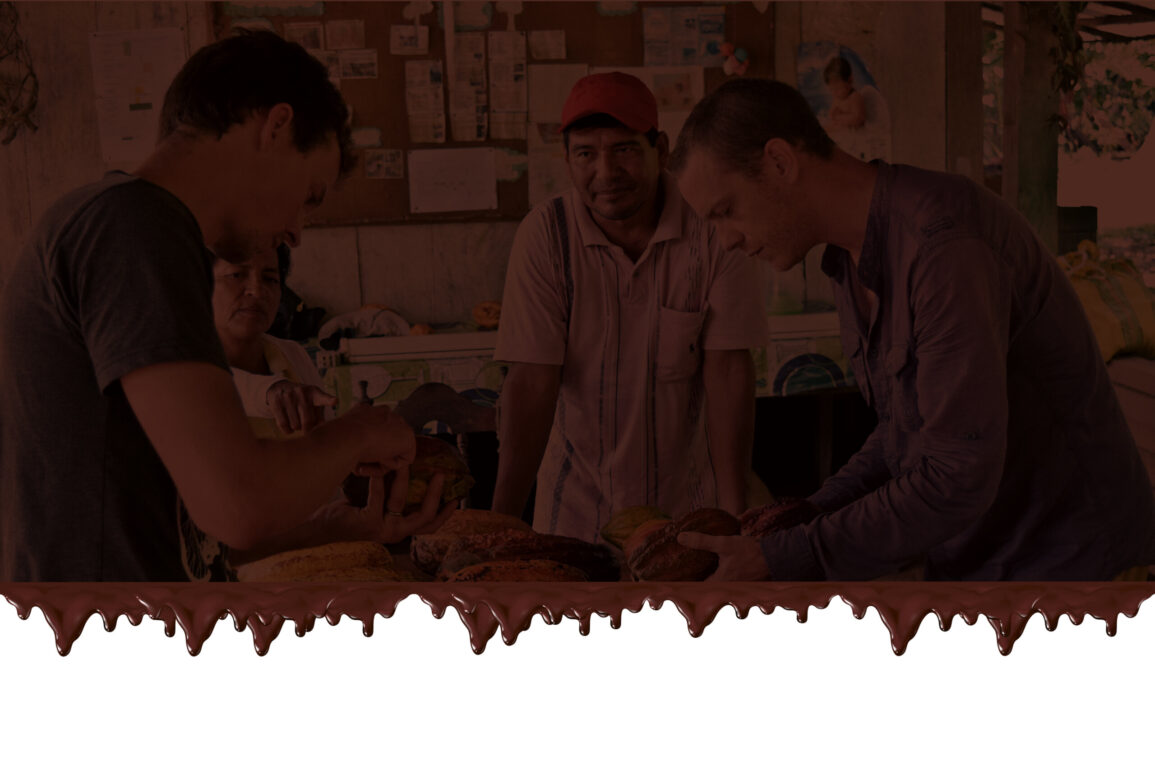From chocolate boxes and chocolate Santas to tree decorations – at Christmas, it’s all about indulgence. Chocolate-based foundations are dedicated to doing good, above and beyond mere enjoyment. Chocolate can do good, both in Switzerland and in the regions where it is grown.
The Christmas season is chocolate season. ‘From an emotional perspective, the season is a very special time of interaction,’ says Christoph Inauen, co-founder of Choba Choba and the Choba Choba Foundation. His business partner Eric Garnier adds: ‘Our connection with the Peruvian farming families is particularly intense at Christmas. This comes from the cultural differences in how and when different countries celebrate.’ In 2015, the duo founded Choba Choba, the first-ever Swiss chocolate brand co-owned by its cocoa farmers. ‘Chocolate is a wonderful, emotional product,’ says Inauen. ‘But it often has a dark side. It is directly linked to the poverty in which the cocoa farmers live.’ In the space of five years, Choba Choba has successfully established itself as a sustainable chocolate brand. Today, 26 per cent of the joint stock company (AG) is owned by producers in Peru. They have a say in the running of the company and share in its success. Choba Choba has a fully transparent supply chain.

The consistent community focus and uncompromising environmental approach have been instrumental in the company’s success. Coop has recently started stocking its chocolate. Commercial success is just one aspect, however, and it is not the whole picture for the two founders. Over and above running the business, they are dedicated to promoting consistent, sustainable cocoa farming. To this end, they founded the Choba Choba Foundation a year ago. Its focus is not just on the supply chain. The charitable foundation has two objectives: ‘We take part in rainforest protection projects with partners in the Peruvian Amazon, where our cocoa is grown,’ says Garnier. ‘We also develop sustainable, professional farming methods and train local cocoa farmers to enable them to improve the sustainability of their production,’ he adds. The aim is to promote a responsible approach to natural resources, to fight poverty and to achieve economic independence for the cocoa farmers. The goal is to do good through good-quality confectionery – and not just at Christmas.

How chocolate helps Switzerland’s natural environment
Switzerland has a history of doing good through chocolate. With chocolate coins, for example. Few products have a stronger tradition of uniting chocolate indulgence with charitable purposes in Switzerland than ‘Schoggitaler’ chocolate coins. In 2021, the product will celebrate its 75th anniversary. ‘While the concept is well established today, it was brilliant and innovative when Pro Natura and the Swiss Heritage Society introduced it in 1946,’ says Loredana Ventre, managing director of Schoggitaler. After the end of World War II, chocolate remained rationed. But Federal Councillor Walter Stampfli – who was in charge of rationing and wartime nutrition – was won over by the idea, and made 25 tonnes of chocolate available. The two NGOs wanted to raise money to save Lake Sils. The lake is located in the Upper Engadine, and was due to be dammed. Hydroelectric power plants would have scarred the landscape. Pro Natura and the Swiss Heritage Society formed the sponsoring organisation and launched the campaign: 20,000 school children sold 823,420 chocolate coins. ‘It was the first chocolate that could be obtained without ration coupons during the post-war period,’ says Ventre. The money raised was used to compensate the municipalities for the loss of revenue from water charges. The lakeside landscape was saved.

The chocolate coins became an unmistakable symbol of environmental protection and heritage preservation. According to the same tradition, school children in Switzerland still use the chocolate coins to raise money for nature conservation projects to this day. Last year, money was raised for the Bavona Valley in Ticino, one of the most beautiful natural landscapes in the Alpine region. ‘Sales rates have declined since the 1980s, however,’ says Ventre. The children are just as active in their fundraising, but fewer and fewer classes are signing up. ‘In addition to the educational impact of getting involved in nature conservation in Switzerland, ten percent of the proceeds also go to the class fund,’ says the Schoggitaler managing director. Over the coming year, Schoggitaler will have the opportunity to celebrate its 75th anniversary and boost its visibility. When it comes to what the celebrations will look like, however, Ventre isn’t giving anything away just yet.
Remaining a pioneering chocolate country
Lindt is celebrating an anniversary this year. The brand has been synonymous with Swiss chocolate for 175 years. ‘High quality standards are as essential to the exquisite chocolate experience as sustainable production,’ says the spokeswoman for the Lindt Chocolate Competence Foundation. Two charitable foundations were founded in 2013 that underpin these principles. According to the Lindt Chocolate Competence Foundation spokeswoman, the advantage of a foundation is that it can focus fully on its purpose without having to concern itself with the day-to-day business. It can serve the common good in the best way possible. The two foundations operate completely independently of one another. The Lindt Chocolate Competence Foundation is dedicated to Switzerland as a location. ‘The image of Switzerland as a pioneering chocolate country is supported by high-quality products,’ the spokeswoman asserts. The foundation fosters product innovation and the continual improvement of production technology. It also supports industry-specific training and education. This commitment aims to maintain Switzerland’s position as a leading chocolate country in the long term. At the heart of the foundation is the Lindt Home of Chocolate museum in Kilchberg, Zurich. The museum shares interesting facts about chocolate with visitors. Universities and companies can make use of the ‘pilot plant’ testing facility for events. The Lindt Cocoa Foundation’s mission is to improve cocoa farming in the local growing regions. It supports innovative projects and focuses on the cultivation, production and processing of the raw materials. ‘By supporting research projects, we are promoting the sustainable development of agriculture in the countries of origin,’ says the foundation’s spokeswoman. ‘The projects aim to motivate and empower farmers to improve their farming practices and help establish a favourable economic environment.’
Learn more about the Choba Choba Foundation, the Lindt Chocolate Competence Foundation and the Lindt Cocoa Foundation on stiftungschweiz.ch


